L’oeuvre de Shirley Villavicencio Pizango est profondément marquée par son enfance : le Pérou, son pays d’origine. Belge d’adoption, son imaginaire et son inspiration restent quant à eux bien attachés à ses images d’enfance. Elle rêvait du Maroc, côtoyait la communauté Japonaise du Pérou et grandissait protégée des arbres de l’immense forêt d’Amazonie. C’est incontestablement ces influences multiples dont témoignent l’oeuvre très prolifique de l’artiste qui nous ont séduit immédiatement.
On vous invite à rencontrer cette semaine l’artiste peintre Shirley Villavicencio Pizango et à entrer dans son univers pictural libre et spontané, laissant toujours libre cours à l’interpretation du spectateur.
On vous invite à rencontrer cette semaine l’artiste peintre Shirley Villavicencio Pizango et à entrer dans son univers pictural libre et spontané, laissant toujours libre cours à l’interpretation du spectateur.
L'artiste Shirley Villavicencio Pizango
Could you introduce yourself ?
Shirley Villavicencio Pizango (°1988, Lima) is a Ghent-based artist with Peruvian roots. The crossover between her South-American heritage and her life in Belgium is one of the main features defining her work. Villavicencio paints her portraits at a whirling pace. She mainly uses acrylic, which has a fast drying period and allows her to paint in a preferred spontaneous manner. The artist rejects conventional perspective and uses vivid colours, often inspired by other cultures. By using the painterly process, she creates an intimate dialogue with her subjects. On a second level, Villavicencio’s paintings contain a more political message. She often makes people with a darker skin tone the protagonists of her paintings, without putting emphasis on their background. In this way she stands up to conventional exoticism, something present throughout Western art history.
Shirley Villavicencio Pizango is represented by Gallery Geukens & De Vil. Her work is shown in solo- and group exhibitions in Belgium and abroad. She recently showed her work for the first time in the U.S, with a solo show at Steve Turner Gallery, L.A.
In your portraits depiction we notice that you often use the white colour as little touche to colour the lips, an arm or an other part of the body depiction like an hair lick for exemple. Could you speak a bit about it? Does it a special signification according to you ?
The touches of 'white' you are referring to are actually colourless, to me they are blank spaces left for the viewer as a suggestion. I like to leave some pieces open for interpretation in my works.
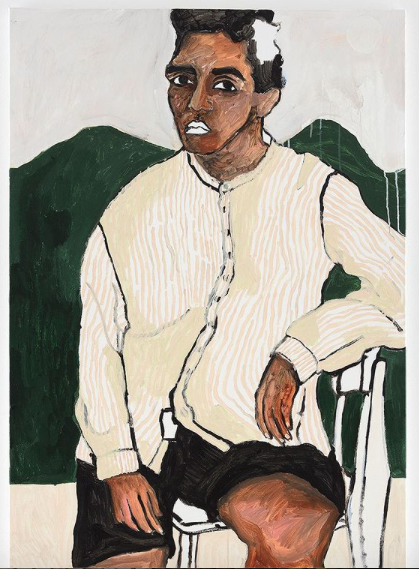
Companion of Absence, Acrylic on canvas, 130 x 90 cm 2020
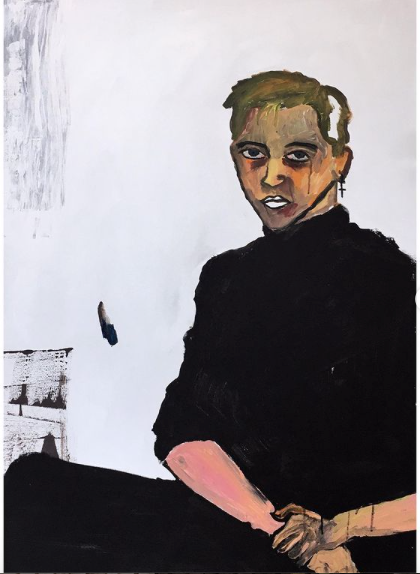
’I Might Say Yes’, Acrylic on canvas, 165x120cm, 2020
You live now in Belgium but you are from Peru. How do you work both cultures on your paintings ?
The melancholic characteristics and bright colors definitely find their roots in Peru and in the Inca-culture, but I think the playful elements and lyrical references derived from my studies in Europe.

‘Olympia Behind the Model’, 2019, Acrylic on canvas, 120x165cm

What You Think But Don’t Say, Acrylic on canvas, 2019
Could you talk about your portraits ? Are they from your imagination or people around you?
Most of my works are portraits or interpretations of existing photographs. I do prefer working with live models over 2D pictures. It's the best situation to create an instant different perception of reality.
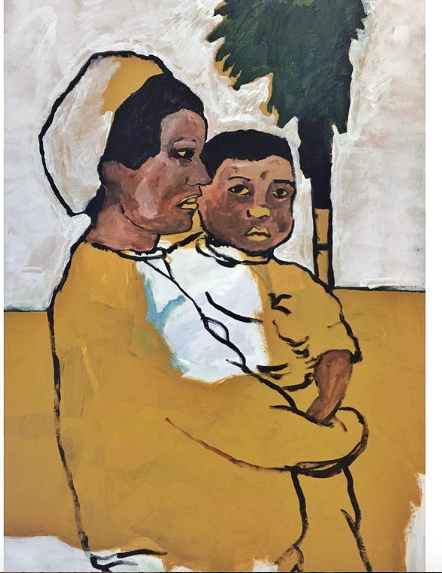
Oasis in Villa El Salvador
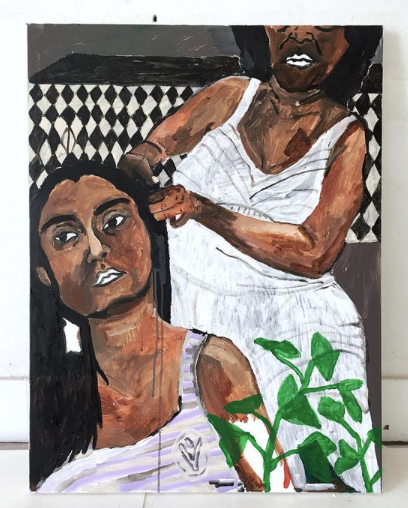
‘Digging a Hole to the Surface’
Your paintings are made of coloured areas, and patterns. There is no perspective. Could your talk about it ?
As said earlier, I love to play with suggestion. Painting without perspective adds to this playful way of painting. I want to break free from global techniques and keep this certain naivity to walk a thin line between painting and drawing.
The nature seems to occupy an important part in your artwork too. What is your link with it?
I spent a large part of my childhood in the Amazon forest with my grandparents. I loved the freedom I experienced living so close to nature. I felt fearless and used my fantasy to fill my days. There were no toys so I needed to be creative with everything I found near me.
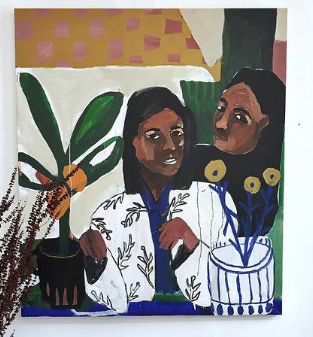
‘If you were a plant you would be a mango tree’, acrylic on canvas
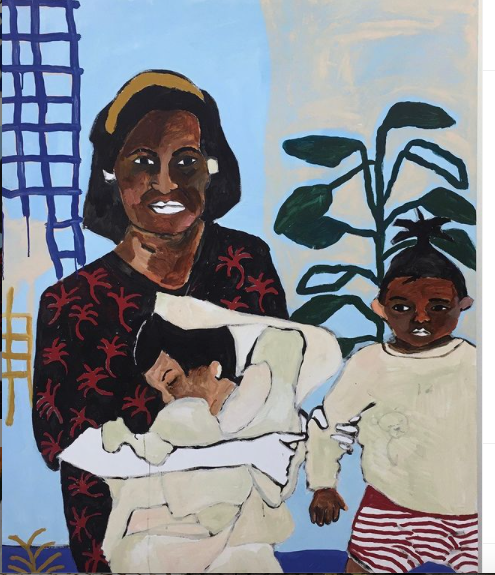
‘The Colour that Cover the pain, acrylic on canvas,160x120cm, 2020
We notice that you mainly depict daily life scenes and the foreground seems a lot inspired by Mediterranean atmosphere (the nature, the vases design..). What are your inspirations?
Since I was 12, I always dreamt of going to Morocco and Japan. I used to watch a telenovela about Morocco and in Peru, there are a lot of Japanese immigrants so the Japanese culture was quite present. The paint I use is Moroccon, for the vases I find inspiration in different cultures, including Japanese ceramics.

Gallery of Memories’, Acrylic on canvas, 90x70cm, 2020

Stilleven
What are you currently working on and what are your future projects?
I'm working on the final show of HISK, if covid allows it my next projects are Art Rotterdam, Art Brussels, I have a residence coming up in Peru (Gingsberg Galeria) and finally a solo exhibition in L.A. Fingers crossed.

Tussen planten
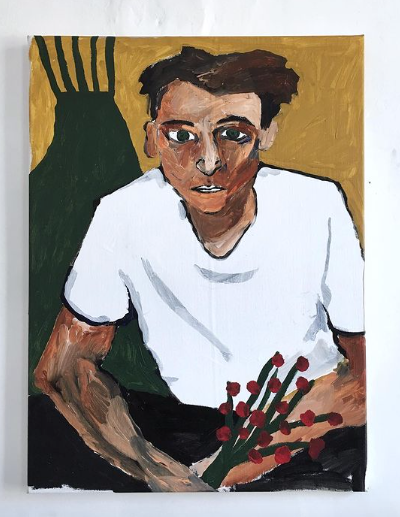
"Portrait of a friend"
Retrouvez l'actualité de l'artiste sur sa page instagram:
Ou encore sur le site de la galerie Geukens & De Vil